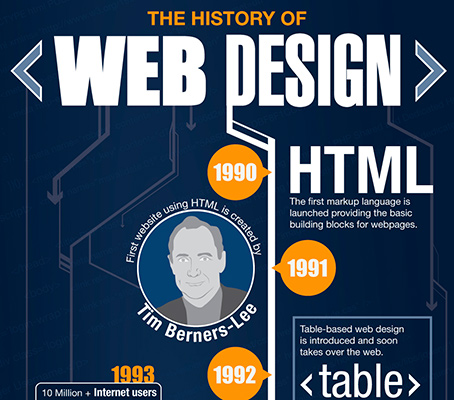Fascinated In Learning Just How Internet Site Style Has Developed For Many Years? Check Out The Trip From Basic, Straightforward Styles To User-Centric User Interfaces That Prioritize The Site Visitor'S Experience
Fascinated In Learning Just How Internet Site Style Has Developed For Many Years? Check Out The Trip From Basic, Straightforward Styles To User-Centric User Interfaces That Prioritize The Site Visitor'S Experience
Blog Article
Written By-Jonasson Singer
In the past, internet sites were simple and focused on information. Navigation was straight, and design was for desktop computers. Currently, customer experience is crucial. Information guides designs for easy navigation. Receptive formats suit different gadgets. Today, dark mode minimizes stress, and minimalist food selections improve navigation. click the up coming site engage users, and strong visuals stand apart. AI combination improves engagement. See how design has developed to boost your online journey.
Early Days of Website Design
In the very early days of website design, simplicity preponderated. Websites were fundamental, with limited shades, typefaces, and formats. The emphasis was on supplying information as opposed to fancy visuals. Customers accessed the net with slow-moving dial-up connections, so speed and capability were vital.
Navigating food selections were straightforward, generally located at the top or side of the web page. Websites were designed for home computer, as mobile surfing had not been yet common. Web content was king, and developers prioritized very easy readability over complex style components.
HTML was the key coding language made use of, and developers had to function within its restrictions. Computer animations and interactive attributes were marginal compared to today's standards. https://www.forbes.com/sites/forbesagencycouncil/2019/03/13/seo-tips-for-b2b-businesses/ were fixed, with little vibrant content or tailored individual experiences.
Increase of User-Focused Style
With the evolution of site style, a change in the direction of user-focused layout principles has ended up being significantly famous. Today, producing internet sites that focus on user experience is crucial for involving site visitors and achieving service goals. User-focused design includes comprehending the requirements, preferences, and habits of your target market to tailor the web site's layout, material, and includes as necessary.
Developers now perform complete study, such as individual studies and usability testing, to collect understandings and comments directly from customers. This data-driven strategy assists in producing user-friendly navigating, clear calls-to-action, and aesthetically enticing interfaces that reverberate with visitors. By positioning the customer at the facility of the style procedure, sites can provide a much more tailored and pleasurable experience.
Receptive layout has likewise become an essential element of user-focused design, guaranteeing that websites are enhanced for numerous devices and display sizes. This flexibility boosts access and use, dealing with the diverse means individuals interact with web sites today. In essence, the surge of user-focused design symbolizes a shift in the direction of producing electronic experiences that prioritize the demands and expectations of the end individual.
Modern Trends in Web Design
Discover the most up to date patterns forming website design today. One famous fad is dark setting layout, offering a smooth and contemporary appearance while decreasing eye stress in low-light settings. One more key fad is minimalist navigation, streamlining menus and enhancing user experience by focusing on essential elements. Integrating micro-interactions, such as computer animated switches or scrolling results, can create an extra engaging and interactive web site. Receptive layout remains vital, guaranteeing seamless customer experiences throughout different gadgets. Furthermore, making use of vibrant typography and unbalanced layouts can add aesthetic interest and draw attention to specific web content.
Integrating AI innovation, like chatbots for customer assistance or individualized recommendations, improves customer engagement and improves procedures. Access has likewise come to be a substantial pattern, with designers focusing on inclusive layout practices to satisfy diverse user needs. Welcoming sustainability by optimizing site performance for rate and efficiency is another emerging fad in web design. Working together with customer responses and data analytics to iterate and improve layout continually is necessary for staying appropriate in the ever-evolving digital landscape. By accepting these modern-day trends, you can create an aesthetically appealing, easy to use web site that reverberates with your audience.
Conclusion
As you review the development of site style from the very early days to now, you can see exactly how user-focused layout has ended up being the driving pressure behind contemporary trends.
Accept the journey of adjustment and adaptation in website design, constantly maintaining the individual experience at the leading edge.
Remain existing with the current trends and innovations, and never ever quit developing your strategy to develop aesthetically sensational and user-friendly internet sites.
Evolve, adapt, and produce - the future of web design is in your hands.
